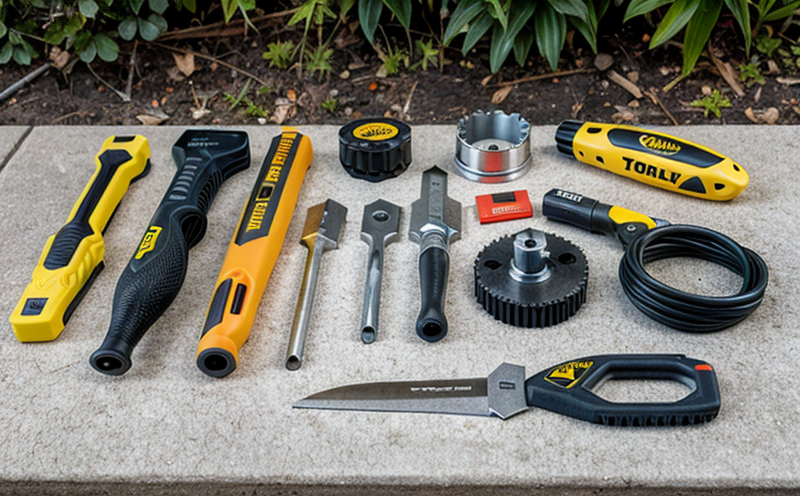Insulation Resistance Testing in Electric DIY Tools
In the realm of consumer products and product safety testing, particularly within the category of DIY tools and hardware products, ensuring the safety and reliability of electric devices is paramount. Insulation resistance (IR) testing plays a crucial role in this context by evaluating the electrical insulation integrity of these tools.
Electric DIY tools are used extensively across various sectors including construction, home improvement, and repair industries. These tools often operate at high voltages or currents, which can pose significant risks if the insulation fails. A failure in the insulation can lead to electric shock hazards, which could result in severe injuries or fatalities.
The primary objective of insulation resistance testing is to determine whether the electrical equipment has sufficient protection against accidental contact with live parts. This test ensures that the tools meet regulatory standards and provide a safe working environment for users. By conducting this test, manufacturers can demonstrate compliance with relevant international standards such as ISO 13852 and ASTM D257.
The testing process involves subjecting the tool to a voltage stress, typically between 500V and 4000V DC, depending on the tool's rated voltage. The current flow through the insulation is then measured using an ohmmeter or megohmmeter. A high resistance value indicates good insulation performance while low values suggest potential issues.
Preparation for this test includes ensuring that the tools are clean and dry to avoid any interference with the measurement results. It's important to note that improper preparation could lead to inaccurate readings, thereby compromising the integrity of the test.
The test setup usually consists of a power supply capable of delivering the required voltage stress, an ohmmeter or megohmmeter for measuring the current flow, and appropriate grounding techniques to prevent ground faults. The tools are then connected in series with the measurement devices and subjected to the specified voltage stress for a set period.
After the test, detailed reports are generated which include the measured resistance values, any anomalies observed during testing, and recommendations for corrective actions if necessary. These reports serve as critical documentation that supports compliance efforts and enhance product safety.
Scope and Methodology
| Test Parameters | Methodologies |
|---|---|
| Voltage Stress | Range: 500V to 4000V DC depending on tool rated voltage. |
| Measurement Device | Ohmmeter or Megohmmeter with appropriate calibration and accuracy. |
| Test Duration | Typically 1 minute for each test point. |
| Environmental Conditions | Tools must be clean, dry, and at room temperature. |
The scope of insulation resistance testing encompasses the evaluation of various components within electric DIY tools. These include the power cord, switch mechanism, motor windings, and any other parts that could potentially come into contact with live circuits. By systematically assessing these components, manufacturers can ensure a comprehensive approach to product safety.
Methodologically speaking, the process involves connecting the tool under test to a high-voltage source for a specified duration. During this period, the current flow through the insulation is continuously monitored and recorded. The data collected serves as evidence of the tool's electrical integrity.
Benefits
The benefits of conducting insulation resistance testing extend beyond mere compliance with regulations; they significantly enhance product safety and reliability. Ensuring that electric DIY tools meet the required standards not only protects users from potential hazards but also builds trust among consumers regarding brand integrity.
- Promotes Safety: By identifying weak points in the insulation, this test helps prevent electrical accidents such as shocks or burns.
- Enhances Brand Reputation: Compliance with strict testing protocols can elevate a company's reputation and market position.
- Reduces Liability Risks: Demonstrating adherence to safety standards reduces legal liabilities associated with product-related injuries.
- Improves Product Reliability: Consistent performance across all units contributes to higher customer satisfaction levels.
In conclusion, insulation resistance testing is an indispensable tool in the quality assurance toolkit of any manufacturer producing electric DIY tools. It provides peace of mind for both manufacturers and users alike, ensuring that products are not only safe but also reliable over time.
Why Choose This Test
- Regulatory Compliance: Ensures adherence to international standards like ISO 13852 and ASTM D257.
- User Safety: Reduces the risk of electric shock by validating insulation integrity.
- Product Quality: Identifies defects early in the manufacturing process, leading to improved product reliability.
- Market Trust: Builds confidence among consumers regarding brand safety and quality.
- Legal Protection: Minimizes potential liability issues through documented compliance efforts.
- Eco-Friendly: By preventing malfunctions, it extends the lifespan of tools reducing waste generation.
The decision to implement insulation resistance testing should be viewed as an investment in long-term success. It not only protects end-users but also safeguards manufacturers against reputational damage and financial losses.





